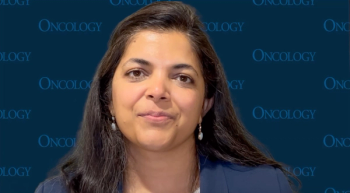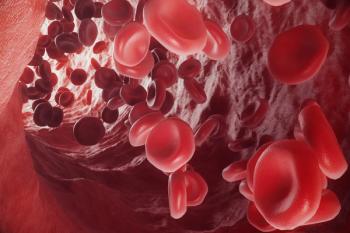
In DLBCL, Polatuzumab Combo Yields ‘Marked Improvement’ in CR, PFS, OS
Polatuzumab vedotin administered with bendamustine and rituximab significantly improved PET-based CR rates, PFS, and OS in DLBCL but not FL.
In patients with diffuse large B-cell lymphoma (DLBCL), the addition of polatuzumab vedotin to treatment with bendamustine and rituximab (BR) led to significantly higher positron emission tomography (PET)-based complete response (CR) rates and longer progression-free survival (PFS) compared with BR alone-regardless of prior treatment status, according to investigators of a multicenter international study (
The study findings, presented at the 2018 American Society of Clinical Oncology (ASCO) Annual Meeting, held June 1–5 in Chicago, showed that this combination therapy did not improve PET-based CR rates in patients with relapsed/refractory (R/R) follicular lymphoma (FL), and longer follow-up is required to assess survival in these patients.
“In patients with FL, the addition of polatuzumab did not improve the PET-based response rate or PFS at this early time point. However, in patients with DLBCL, polatuzumab led to a marked improvement in the rate of complete response as measured by PET scan, as well as a significant improvement in PFS and OS. These findings were quite remarkable, as relatively few trials have shown a survival benefit in this setting,” said study investigator Laurie Sehn, MD, from the BC Cancer Agency and the University of British Columbia, Vancouver, Canada.
Polatuzumab vedotin is a novel antibody-drug conjugate that targets CD79b+ cells in patients with B-cell non-Hodgkin lymphoma. Preliminary findings from the current trial led to Breakthrough Therapy designation by the US Food and Drug Administration for this agent. In the current randomized phase Ib/II study (ClinicalTrials.gov identifier: NCT02257567), Sehn and colleagues evaluated the safety and efficacy of polatuzumab combined with BR vs BR alone in two patient populations. Dr. Sehn presented results for safety and efficacy from the R/R FL and DLBCL cohorts.
In this study, 80 patients with R/R FL and 80 with transplant-ineligible DLBCL were randomized 1:1 to polatuzumab vendotin at 1.8 mg/kg plus BR or to BR alone for 6 cycles.
In DLBCL, PET-based CR rates, as determined by an independent review committee, were significantly higher in patients who received BR plus polatuzumab vedotin, compared with those treated with BR alone (40% vs 15%, respectively; P = .012). DLBCL patients who received combination therapy with polatuzumab vedotin also had longer median PFS (6.7 months vs 2 months; P < .0001) and median OS (11.8 months vs 4.7 months; P = .0008). In DLBCL, longer PFS and OS were seen for patients treated with the polatuzumab vedotin combination, including those who had received two or three prior lines of therapy, as well as R/R patients. (Outcomes for patients with FL were similar in both study arms; PET-based CR rates were 69% with PBR vs 63% with BR; and median PFS was 17 months with PBR and 17.3 months with BR alone.)
Toxicities associated with polatuzumab vedotin plus bendamustine were manageable. “Overall, the regimen was well tolerated, however there was an increase in the rate of cytopenias, febrile neutropenia, and infections. In addition, there was an increase in peripheral neuropathy, which was mainly low-grade and reversible,” Sehn told Cancer Network.
Polatuzumab vedotin was recently granted PRIME (PRIority MEdicines) designation by the European Medicines Agency for the treatment of R/R DLBCL. A number of ongoing studies are evaluating the efficacy and safety of polatuzumab vedotin for several types of non-Hodgkin lymphoma.
Newsletter
Stay up to date on recent advances in the multidisciplinary approach to cancer.
















































































